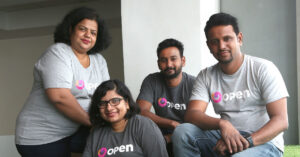Building a digital product for the very first time is exciting. Any founder can confirm that it is also scary, a ton of work with an uncertain outcome. Let’s face it: your first product is unlikely to be your best. It will probably even suck. There are numerous ways you can mess it up, only a few to get it right. Daniel Spijker has brought several products to the market and is now Managing Director at digital product studio Tapptitude, where he helps others to build good products. He is eager to share tips on how to hit the ground running with an MVP (minimum viable product) people will actually love.
Why startups fail
Everybody loves to share success stories. This website is full of them. But it is good to face the hard truth as well: The majority of startups won’t move past the MVP phase. Creating a minimal viable product is a huge step before going to the market. It is not the product you’ve had in mind when setting out, but it is doable within the timeframe and considering the resources. More importantly, it is viable in the market.
That last step is the most common reason startups fail. In a survey of CB Insights, ‘not finding a market need’ is identified as the primary reasons startups go belly up. 42 Per cent of startups don’t succeed because many products are designed for users who simply don’t see why the product exists in the first place, says Tapptitude’s Daniel Spijker.
Tapptitude is a European product design and development studio that has recently set foot in The Netherlands. They focus on designing and building mobile-first products for funded startups or established brands. Among them are the anti-diet nutrition-app Wellory, the green on-demand laundry service Oxwash, and in-venue ordering app for bars, restaurants and venues OnTapp. As such, they know a thing or two about building products with market fit and product validation.
‘Constantly validating ideas’
Building a product that is going to survive and is eventually going to conquer the world all starts with knowing what your users want. It means finding out whether the problem you’re trying to solve really exists. And how many people have that problem and if they are willing to pay for a solution.
A good founder doesn’t build a product on assumptions, even if they sound smart. They frame them as questions and do the work to find the real answers. They’ll avoid talking to friends and family if nobody pokes holes in their concept. This validation process of talking to actual potential users before building anything will save time and money in the long run and will decrease the chances an MVP will be a failure.”The founders that we’ve seen with most success all approach problems with a research mindset”, says Spijker. “They are passionate about solving the problem and are not too attached to the product. This means they are open to suggestions and are constantly validating ideas which allows them to commence their journey with an MVP that works.”
The ‘Minimal Lovable Product’
According to Spijker, the term MVP is being widely used for a wide range of subpar products. “It’s mainly an excuse to build something crappy. The worse it is, the better. ‘Look at me being lean’, is what a bad MVP is supposed to say.”
Spijker isn’t buying it.
Instead, his experience building products leads not to an MVP, but an MLP instead: a Minimal Loveable Product. One that not only has the core functionality and usability so the user can get the job done as they’ve set out to do. But also a product that has one loveable element that sets it apart and makes it easy for the user to want to fall in love with it.
Spijker: “At Tapptitude when we build a product for new clients, we start with strategy workshops. We start with mapping out the basics like the problem, the audience, competitors and alternatives in the space, and how users solve the problem today. Then we go into the solution part. We define the product value, map the features, ranging from the basics to the nice-to-haves that will set it apart. This can take from a couple of sessions to a few days, but our end goal is to define the product. Map out the whole thing.”
Pyramid of value
The second step in the process is where the ‘loveable’ MVP comes in. Instead of building a product with just the main functions, Tapptitude gets its UX specialists to build the key user flows for the MVP. “You can imagine your product and all its functionality as a pyramid of value”, explains Spijker. “The bottom has all the functional stuff, the middle has the stuff that makes the product usable, while the small tip consists of the lovable little things that people don’t expect, and which make the product stand out in that vertical. The MVP you want to build is not just the functional stuff. Instead, it is a slice of the pyramid. The core-functionality, with a touch of loveable.”
Build a circle of partners around you
Building a lovable MVP is not something you can do easily on your own. The more you know the industry, the audience, or the startup space, the more easy it is to confuse what is an assumption and what is a hypothesis that’s been tested in the market. Surrounding yourself with advisors and partners who can listen to your thought processes is the best way to have someone poke holes in your decision making. Spijker: “The key difference between building a crappy MVP and an MLP for us is to carefully go through these steps of taking a decision together with the client. Don’t look for an advisor or an outsourcing option that says ‘yes’ to everything.”
“The first conversation we have with new clients is not about the product and what it costs, but why they want to build it in the first place”, says Spijker. “We ask ‘why’ a lot, and we do this because we want the products we work on to succeed in the long run. These are typical ‘investor questions’ and we indeed go into these projects as a partner. However we’re not looking for equity, we’re looking for good portfolio companies. You only get those when you build a product that works.”
Call for startups with innovative solutions for the future cities from all over the globe.










